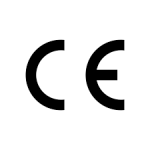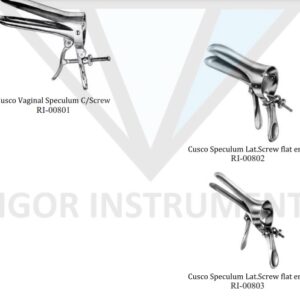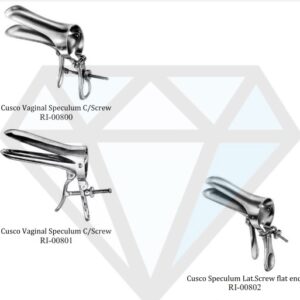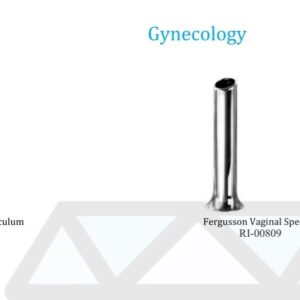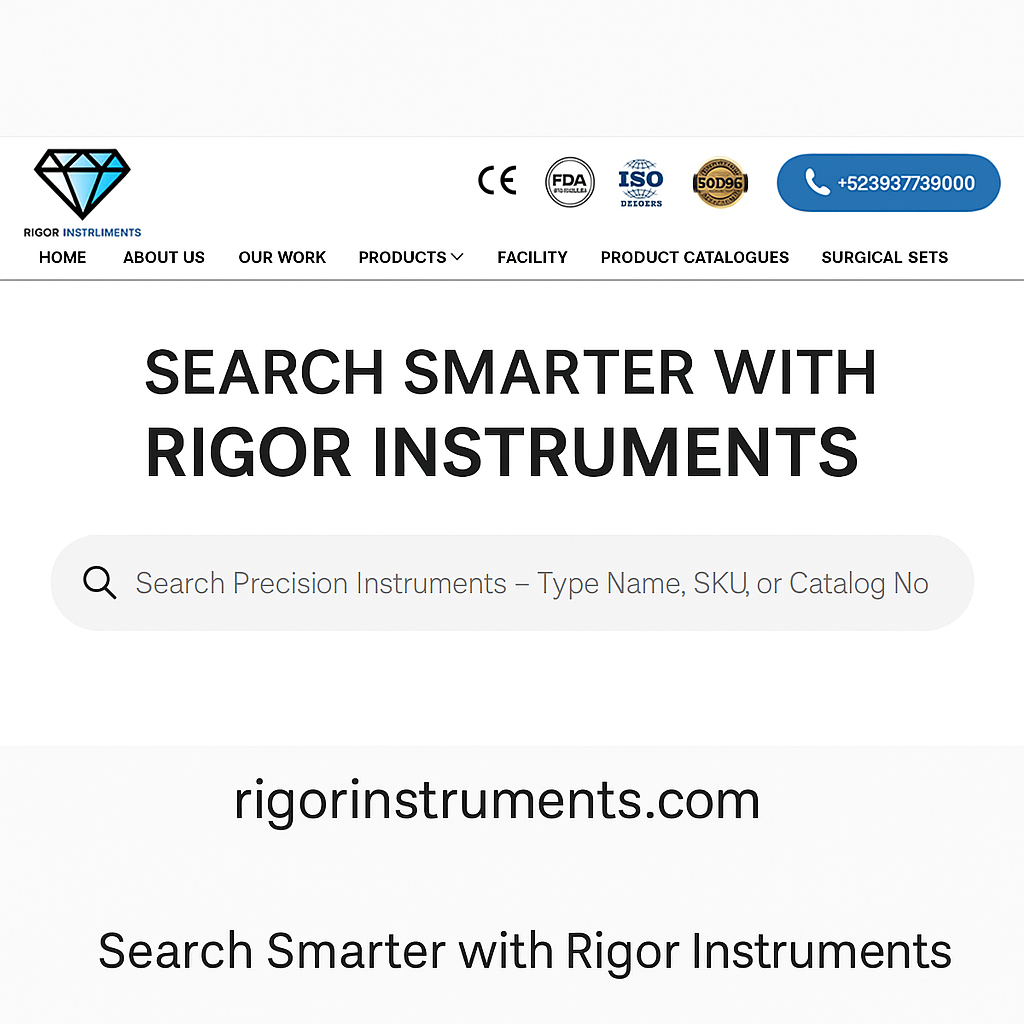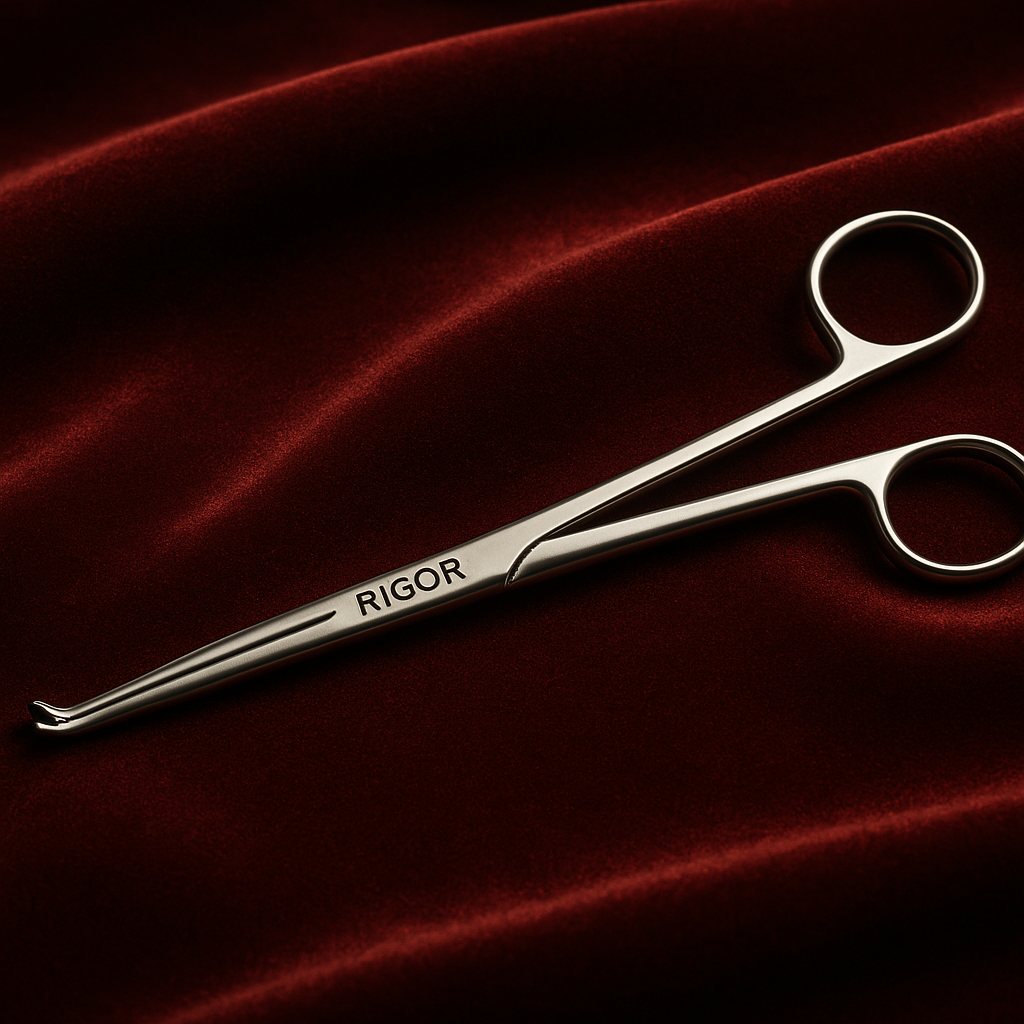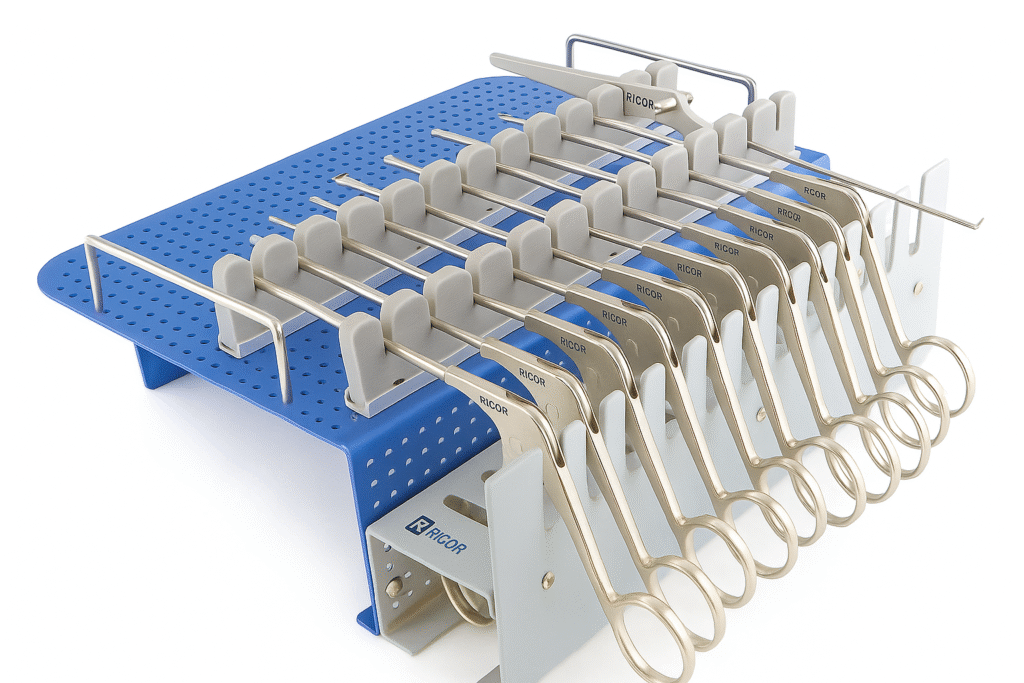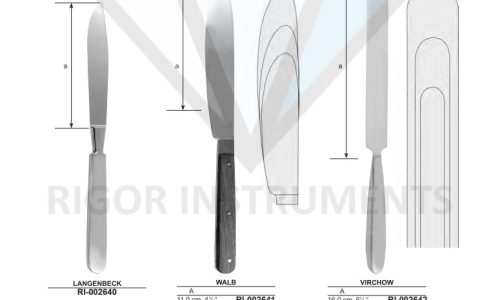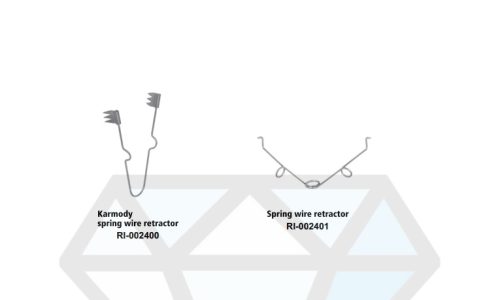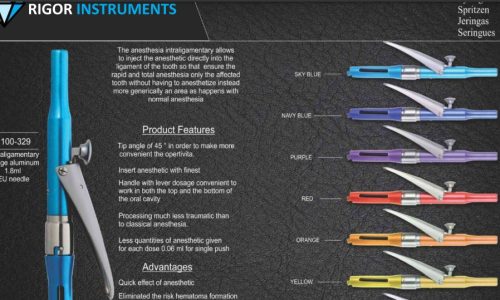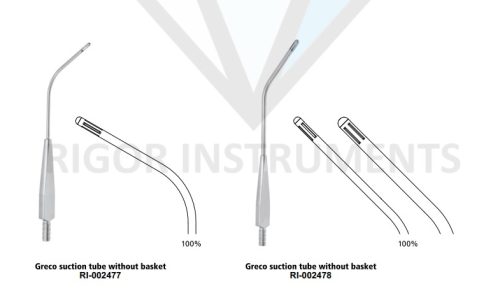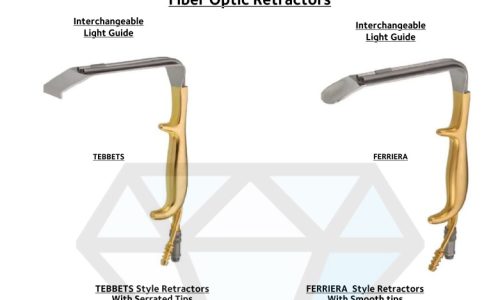Gynecology Surgical Instruments
-
Sale!

Cusco Speculum Lateral Screw Flat End (RI-00802)
$62.00Original price was: $62.00.$60.00Current price is: $60.00. View More -
Sale!

Cusco Vaginal Speculum C/Screw (RI-00800)
$60.00Original price was: $60.00.$58.00Current price is: $58.00. View More -
Sale!

Semm Vaginal Speculum (RI-00808)
$65.00Original price was: $65.00.$63.00Current price is: $63.00. View More
Surgical Instruments Blog
Precision Engineered: Custom-Made Atraumatic DeBakey Clamps Designed by a Surgeon At Rigor Instruments, innovation begins with one principle: listen to the surgeon. When a highly experienced cardiovascular surgeon approached us
Why Rigor Instruments Invested in Smart Product Search — And Why It’s the Future of Surgical Buying In a crowded digital world, buyers don’t want to browse — they want
One-Stop Surgical Instrument Sourcing: Why Rigor Instruments is the Complete Solution You’ve Been Searching For When Quality Meets Convenience — Rigor Delivers For decades, international buyers have faced
Reusable vs. Single-Use Surgical Instruments: Why RIGOR Stands Firm on Reusables In the fast-paced world of modern surgery, the conversation around single-use vs. reusable surgical instruments is louder than ever.
Laryngeal Forceps: Precision Tools for ENT & Airway Procedures Laryngeal forceps are specialized surgical instruments used in ear, nose, and throat (ENT) and laryngological procedures. These forceps are designed for
Mastering Arthroscopy Punches: Types, Surgical Uses & Rigor’s CNC Precision Leadership Arthroscopy is a minimally invasive surgical procedure that requires tools of extreme precision—and none more important than the arthroscopy
What are Gynecology Surgical Instruments

Gynecological disorders are diagnosed, treated, and managed with specialized instruments called gynecology surgical instruments. Gynecologists and obstetricians employ these instruments to carry out surgical operations including laparoscopy, hysteroscopy, and hysterectomy. These instruments are intended to be accurate, reliable, and secure for use in operating rooms.
Gynecology is a specialty that is always developing new instruments to enhance patient outcomes and boost surgical effectiveness. We’ll go over some of the most popular gynaecology surgical instruments, along with their functions and distinguishing characteristics.
Types of Gynaecology Surgical
Instruments
1. Speculum:
The speculum is a device that holds the vaginal walls open so that the
cervix may be seen. The Graves, Pederson, and Sims speculums are just a few of the several kinds of speculums that are offered. While the designs of each speculum vary significantly, they are all utilized to offer a good view of the cervix during gynecological examinations and operations.
2. Forceps:
During surgery, forceps are a sort of surgical device used to grab and hold tissue. Forceps are employed in gynecology to retain the uterus during a hysterectomy or to grab the cervix during a colposcopy. There are several distinct kinds of forceps, including the Tenaculum forceps, Babcock forceps, and Allis forceps. Each sort of forceps is specifically sized and shaped to be utilized for that function.
3. Scissors:
During surgery, scissors are a typical instrument used to cut tissue. Scissors are used in gynecology to remove tissue during hysterectomies and to cut the cervix during cervical biopsies. Straight, curved, and Mayo scissors are only a few of the various kinds of scissors that are offered. Each type of scissors has a distinct blade form and length that are made to be used for that particular function.
4. Trocars:
For laparoscopic surgery, trocars are a type of surgical tool that are used to make a port. The laparoscope is introduced through the trocar, which is put into the abdominal wall. Trocars exist in a variety of sizes and forms, and each type is intended for a particular application.
5. Laparoscope:
During laparoscopic surgery, a laparoscope is a long, thin tube with a camera at the end that is used to view the inside of the abdomen. A trocar is used to introduce the laparoscope, and a monitor in the operating room receives the picture. For better sight during surgery, laparoscopes are available in a variety of diameters and viewing angles.
6. Uterine Sound:
During gynecological examinations and treatments, a long, thin tool called a uterine sound is used to gauge the uterus’ depth. The depth of the uterine sound, which is measured in centimeters, is put into the uterus through the cervix. Additionally, the uterine sound is utilized to direct the placement of an intrauterine device (IUD).
7. Curettes:
During surgery, tissue is scraped with the use of curettes, a surgical instrument. In gynecology, curettes are used to remove tissue during a hysteroscopy or to scrape the uterus’ inside during a dilation and
curettage (D&C) operation. There are several varieties of curettes, including the flexible curette, the sharp curette, and the blunt curette.
Why Rigor Instruments
Rigor is a second-generation surgical instruments manufacturer and supplier from Sialkot Pakistan providing best quality in Gynecology Surgical Instruments since 1985.
Our exquisite quality and competitive pricing has given us great competitive advantage in the global surgical instruments market. Our ambition is to become a leader in international market in Gynaecology Surgical Instruments.
Have a glance at our wide range of Gynecology Surgical Instruments with details,

